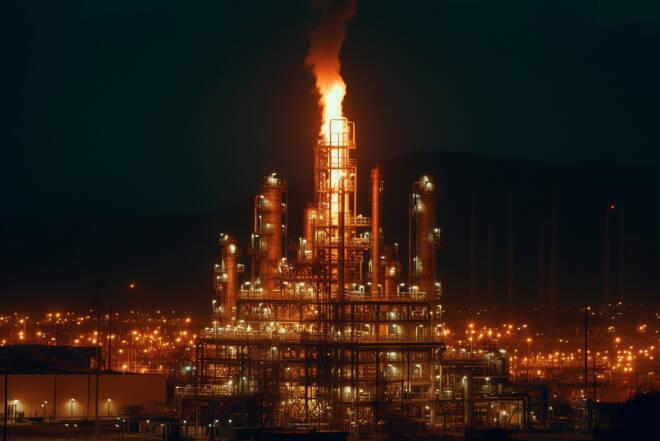Advertisement
Advertisement
Natural Gas News: Can Reduced Production Counteract Persistent Oversupply?
By:
Key Points:
- Natural gas futures mark continuous declines across multiple timeframes.
- Price movements reveal deep-seated market concerns and bearish sentiment.
- Storage withdrawal exceeds forecasts, yet highlights persistent oversupply.
U.S. Natural Gas Market: Persistent Bearish Trends
The U.S. natural gas futures have consistently trended downwards, culminating in losses across weekly, monthly, and quarterly periods. This trend, marked by a 3.82% weekly, 13.32% monthly, and 21.15% quarterly decline, reflects a bearish sentiment rooted in an interplay of demand fluctuations, storage trends, and supply challenges.
Last week, Natural Gas settled at $1.763, down $0.070 or -3.82%.
Analyzing Price Movements
The natural gas market has been struggling under the weight of various factors. The fourth consecutive weekly loss and the third consecutive quarterly drop underscore the prevailing bearish sentiment. This persistent downward movement is not just a short-term fluctuation but a clear signal of deeper market concerns. The continuous decrease, particularly the notable monthly loss, the largest in five months, points to an underlying market apprehension about future supply and demand trends.
Storage and Withdrawal Impacts
A pivotal moment last week was the reported storage withdrawal of 36 billion cubic feet, surpassing analysts’ forecasts. While this might typically signal a bullish trend by indicating higher-than-expected demand, the context matters. When compared to last year’s 55 bcf decrease and the five-year average decline of 27 bcf, this withdrawal is less bullish than it appears. It suggests that, while demand is robust, it may not be strong enough to offset the current oversupply in the market.
Production Changes and Their Implications
March witnessed a decrease in production to 100.2 billion cubic feet per day, down from February’s 104.1 bcfd. This drop, influenced by reduced activities from major players like EQT and Chesapeake Energy, reflects a cautious approach in response to price volatility. The decline in production, however, is relatively moderate and doesn’t fully offset the large storage levels, thereby exerting a bearish pressure on prices.
Demand Fluctuations and Export Trends
The expected decrease in gas demand, including exports, further compounds the bearish outlook. The reduction in LNG export flows is particularly notable. It signifies not just a domestic oversupply but also a weakening in global demand – a critical factor for traders to consider.
Short-Term Forecast
In the coming week, the natural gas market is likely to remain volatile, with a bearish inclination. The combination of mild weather forecasts, substantial storage levels, and a cautious approach by producers points towards continued downward pressure on prices. Experienced traders should watch for any changes in production or unexpected shifts in weather patterns, as these could disrupt the current market balance and influence price movements. The complex interplay of these factors suggests that while short-term volatility is inevitable, the general trend remains bearishly inclined.
About the Author
James Hyerczykauthor
James Hyerczyk is a U.S. based seasoned technical analyst and educator with over 40 years of experience in market analysis and trading, specializing in chart patterns and price movement. He is the author of two books on technical analysis and has a background in both futures and stock markets.
Advertisement
